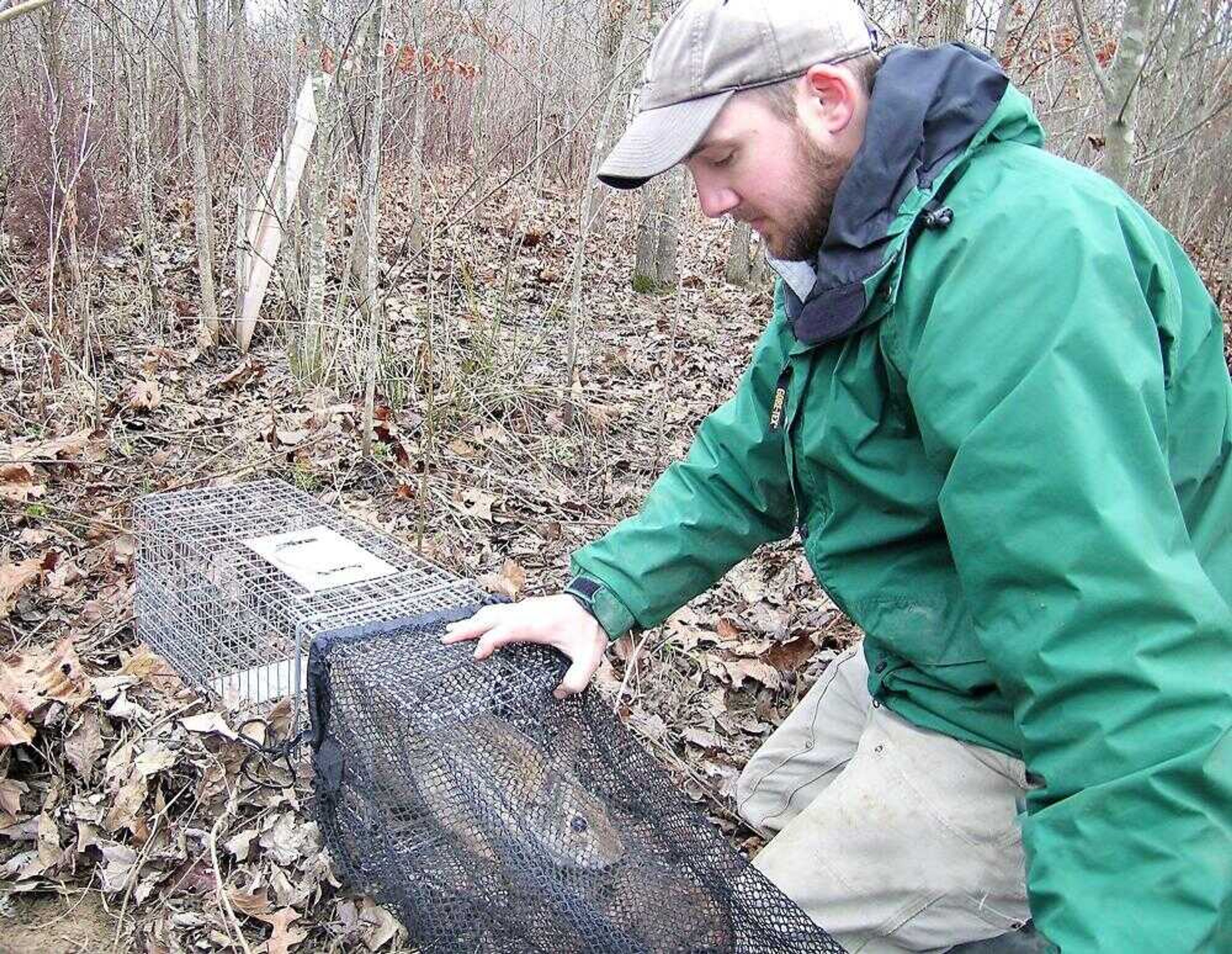CARBONDALE, Ill. -- When a news release was issued last month highlighting the Cooperative Wildlife Research Laboratory's project to study swamp rabbits, Southern Illinois University zoologist Eric Schauber had some explaining to do.
The $200,000 federal grant supporting the study wasn't solely used to finance construction of 400 fake log latrines designed to detect the extent of the rabbit's range, he said.
"That is an enormous amount of money to make bathrooms for bunnies," Schauber acknowledged. "I would really like to make sure we get those numbers right."
And the research project wasn't limited to the large lagomorphs common in the hardwood forests along creeks -- it also includes studies of bobwhite quails and mourning dove populations across Southern Illinois. The project, financed through the Illinois Department of Natural Resources, will be complete in 2009.
The latrines were set up late last fall in places where habitat restoration could be supporting a rebound in swamp rabbit populations. The total cost, Schauber said, was about $2 each. The grant also supports stipends over four years for six graduate students studying the rabbits, quail and doves, Schauber said.
"The stipend is not very much, and it covers field supplies, radio collaring for birds and capturing animals and vehicle use," he said.
One use of the money was the latrines. The impetus behind the "bathrooms for bunnies" is that while swamp rabbits are reclusive, sometimes hiding in water with just their noses exposed to avoid predators, they can be easily detected when field researchers find their distinctive droppings.
Swamp rabbits are the largest species of cottontail rabbit, sometimes weighing as much as six pounds. Their favorite homes are along creeks in dense forest, and they prefer mossy logs softened by years of rotting to leave signs of their passing.
Southern Illinois is the northernmost part of their range, and habitats in the region have been fragmented by clearing and draining the land. With federal and state policies now encouraging the restoration of forests and wetlands, scientists are trying to figure out if the effort is restoring the swamp rabbit as well, he said.
Because of the animals' reclusive nature, live tracking and trapping of the rabbits take too much time, Schauber said. So using his knowledge of their habitats, he developed a four-sided box covered with a layer of carpet with no support. The result was a fake log that felt mossy and soft.
The fake latrine logs were then placed in locations where habitat restoration had begun but where no natural logs exist for the rabbits' use.
"It is hard to find out by other ways whether they are using the habitat," he said. "But they make very conspicuous piles of poop as a scent marking."
Placing the latrines -- and checking them in the field -- was a job that fell to graduate student Paul Scharine. He set 10 to 20 of the latrines at each of the 30 sites in Alexander, Johnson, Pulaski and Massac counties. In all, Scharine said, 12 of the sites -- including six of the 11 in Alexander and Pulaski counties -- showed presence of the rabbits.
"What we are trying to see is if swamp rabbits are using the areas that have been reforested because of the Wetlands Reserve Program or other replantings," Scharine said. "They are reliant on bottomland hardwood forests. If the forests are not healthy, they are an indicator species."
In addition to the latrine logs, Scharine also set up traps in a few locations so he could tag the rabbits to track their movements. And when he removed them from the cage, the rabbits lived up to their aggressive reputation, built partially on the story of then-President Jimmy Carter fending off a swamp rabbit that attempted to climb into his boat while he was fishing on his farm in 1979. The story of the hissing, teeth-gnashing rabbit played out for more than a week in the national press. Scharine said he's seen that side of their personality.
"When you handle a cottontail rabbit, generally they are docile," he said. "When you handle a swamp rabbit, they kick and kind of do a screaming thing. They are very vocal when captured and kick their legs. They have very sharp toenails."
Despite the scratches, Scharine said the swamp rabbit study is having satisfactory results. "We are showing they are here, and in some cases they are here in large numbers."
But Schauber said he's still peeved at the way some media reports on his work have portrayed the study and its costs. A television news report was picked up nationally, he said. "My parents in Colorado called me up and asked whether we are using Persian carpets."
rkeller@semissourian.com
335-6611 extension 126
Connect with the Southeast Missourian Newsroom:
For corrections to this story or other insights for the editor, click here. To submit a letter to the editor, click here. To learn about the Southeast Missourian’s AI Policy, click here.








